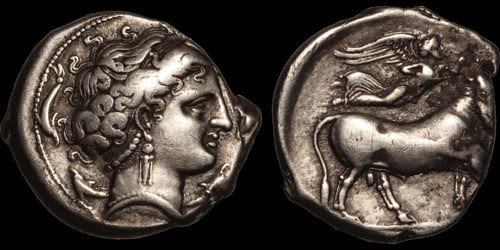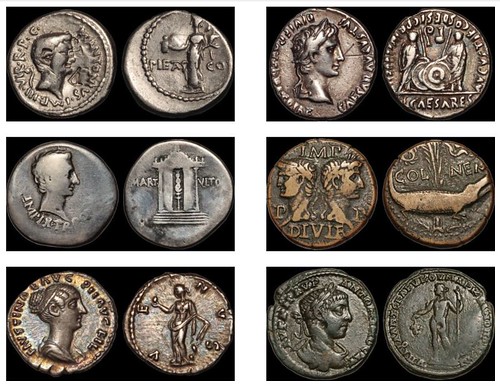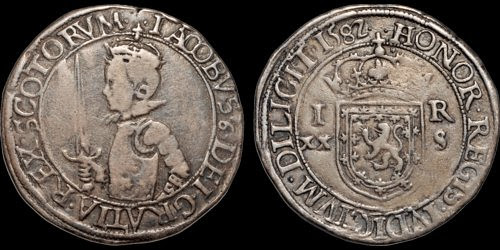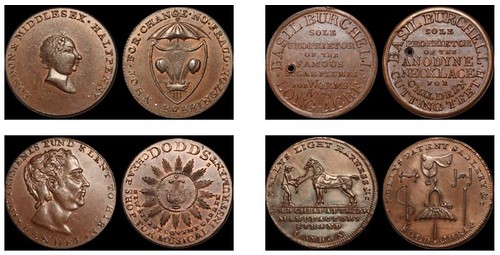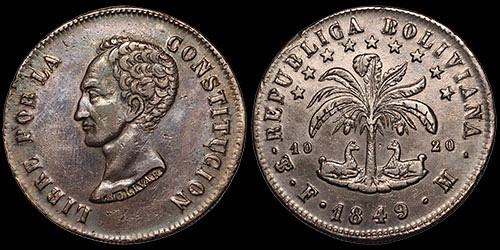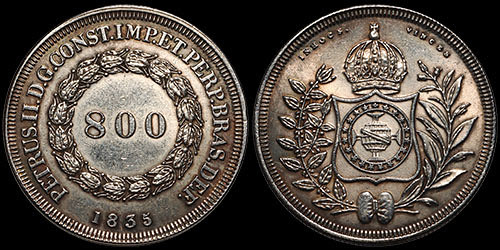
PREV ARTICLE
NEXT ARTICLE
FULL ISSUE
PREV FULL ISSUE
DAVISSON E-AUCTION 41 HIGHLIGHTS
The Davisson's E-Auction 41 closes this week. Here are some articles they published recently via client emails showcasing some sale highlights.
For more information, see:
Ancient Coinage Fall is upon us! Now is the time of year when we all wonder "where did summer go" and "how are we already halfway through September?" The auction calendar is similarly inexorable–E-Auction 41 has just two weeks to go! Bidding closes on Wednesday, September 29th. This auction is particularly diverse, with significant sections devoted to World and U.S. in addition to our usual Ancient and British offerings. Below we look at a few notable lots in the Greek and Roman sections. The Greek section of the sale is highlighted by several attractive large silver pieces–from the fine style nomos from Neapolis above, to the beautifully toned Calabrian didrachm below. We included many coins with a tie to wine—grape clusters and leaves, wine jugs, satyrs, and Dionysos. Look also for interesting bronzes and smaller silver pieces from Iberia and Sicily. Alexander and related Macedonian issues are well represented by further selections from a mid-twentieth century North American collection we acquired recently. Collected in the 1950s and '60s, they are a fascinating snapshot of what was available to determined collectors at the time, even when located in the American Midwest and depending largely on bids and wantlists mailed to major London auction houses. The East is represented by an interesting small group of Baktrian issues, along with a particularly attractive Indo-Skythian tetradrachm. The Roman section packs a wide range into just 24 lots–a diverse handful of Republican silver and bronze, a thoroughly bankers' marked Mark Antony denarius, more selections from the mid-century North American collection mentioned above, and a diverse offering of provincial issues primarily from Thrace, to name a few. There's more to see, take a look! We keep our E-Auctions small enough to browse easily, and diverse enough that there is a little something for everybody. Stay tuned as we next turn to the British, World, and U.S. sections, each of which have some particularly interesting and attractive lots. Scottish Coinage E-Auction 41 closes next week! Bidding closes on Wednesday, September 29th. Read on as Allan introduces the first of four parts of a scholarly and comprehensive Scottish collection, which highlights the British section of this sale. (Look for more of the collection in our next two E-Auctions, and in our major annual auction early in 2022.) The details of Scottish history are often evident in the coins of Scotland in ways that are not always so apparent in coins of many other countries. It is not just a question of the designs and the legends—naming the monarch and indicating the country by a coat of arms is not unusual. But the more you study Scottish coinage—particularly the hammered pieces—the more you see the Scottish spirit in the design and striking of the coins.
Scottish coinage begins showing a strong English influence. But the English at the time of the first Scottish coins were embroiled in a civil war, and the coinage was rough and irregular (phrases that pretty well describe Scotland at the time). By 1249 when the reign of Alexander III began, English coinage had gone through the refined short cross coinage that began under Henry II and was into the equally refined voided long cross issues of Henry III. It wasn't until Alexander's Second Coinage beginning around 1280 that the term
The parallels in design continued to be similar for Scottish silver coinage until the reign of James III and the groat issues (1471, 1484) that show a strong French influence with their realistic portraits. The circumstances leading to young Mary's betrothal and marriage to the young Francis who became Francis II was poignantly represented in the twelve penny groat with its Latin legend that translates From this time on, Scottish coin design pretty much goes its own way. Mary's life is well chronicled in coins that reflect Continental tastes as well as her challenging life. Her son's reign went through eight different coinages before his ascending the English throne. From then on, Scottish and English coinage are variations on a similar theme. British Tokens and World Coinage E-Auction 41 closes next Wednesday, September 29th! Below Allan touches on highlights from the two substantial collections that make up our British trade token and World coinage sections. A substantial part of our auctions for the past few months has been the presentation of two collections based on publications a century and more ago. The Michael Sussman Collection of British Trade Tokens follows the Dalton and Hamer reference completed in 1918. The major collection of world coins harks back to the 1860 publication by James Snowden of the official extensive U.S. Mint collection.
In this sale, tokens from the Mike Sussman Collection feature the extensive issue from Middlesex. Most of the Middlesex tokens listed here were issued for trade. John Lusk's 2014 book on
The collector who took Snowden's work as his goal picked an even more extensive challenge. Snowden's inventory included ancient coins (covered in under 60 pages), but the emphasis of the bulk of this 411 page reference was on It took Bolivia sixteen years of battle to free itself from Spain, and Simon Bolivar's role was so significant that the country was named after him. South America is represented in this catalog and the fluctuating fortunes of the continent are shown in its coinage.
The Cundinamarca was a Colombian province and then a pre-Republican Republic that struck coins from 1814 to 1821. It became a part of the newly formed Gran Colombia in October of 1821, a Bolivar-led effort to federalize an area that now includes Venezuela, Ecuador, and Colombia. (All three of the coins in this lot are dated 1821, the end of the independent republic.) Many of the other lots in this 16th to early 19th century cross section of coinage have tales to tell as well. Denmark's geography made it a key player in European history. This sale offers a Viking-era coin from Denmark (lot 56), and several lots tracing Danish history from the 16th to the 19th century. Several pieces represent the reign of Christian IV, the longest reigning Danish monarch, whose participation in the Thirty Year's War cost Denmark dearly. (His sister Anne was the wife of James VI of Scotland who became James I of England. European royal families frequently intermarried.) The section of Danish issues continues down to the late 1800's, including the reign of Christian VIII who was also briefly Norway's king (as Christian Frederick). He was followed by Charles II (XIII of Sweden) and Charles III (XIV of Sweden). Napoleon in Italy, British and Dutch colonial issues, Switzerland, Colonial America—we could say so much more about what all these coins represent. But the coins speak volumes for themselves.
For more information, see:
Wayne Homren, Editor The Numismatic Bibliomania Society is a non-profit organization promoting numismatic literature. See our web site at coinbooks.org. To submit items for publication in The E-Sylum, write to the Editor at this address: whomren@gmail.com To subscribe go to: https://my.binhost.com/lists/listinfo/esylum All Rights Reserved. NBS Home Page Contact the NBS webmaster 
|
